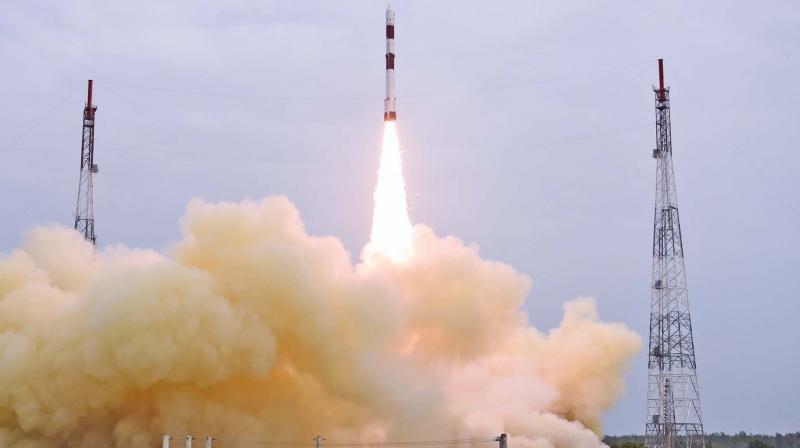Isro places sharper eye in sky

Sriharikota: In a major boost to India's security, the Indian Space Research Organisation's PSLV-C43 rocket has successfully launched its first-ever Hyper Spectral Imaging Satellite (HysIS), one of the most advanced earth observation satellites along with 30 co-passenger foreign satellites on Thursday from here.
The highly sophisticated hyperspectral camera and the chip called optical imaging detector array in the HysIS satellite can enable distinct identification of objects, materials and processes from 630 km above earth.
It will help to keep a vigil on object or movements on the ground thereby enhancing the capability of armed forces.
“The users will decide about using it for strategic purposes after seeing the results. This hyperspectral imaging satellite is meant for identifying objects clearly. It can be used for various purposes including agriculture, monitoring environment and others,” Isro chairman K.Sivan said after launch.
By reading the spectrum for each pixel of a scene, this imaging technology identifies objects precisely from space.
So far, only the US, China and European Agency are having systems as sophisticated as hyper-spectral camera launched by Isro, scientists said.
Besides military surveillance, the HysIS satellite can also be helpful in identifying minerals and oil, monitoring environment and crops.
The PSLV-C43 rocket lifted off from the first launch pad in Satish Dhawan Space Centre (SDSC) in Sriharikota at 9.57 am. In a mission that lasted close to two hours, the rocket has launched 31 satellites in two different orbits.
After the Indian satellite positioned in an orbit 636 km over the earth, the last stage of the rocket was reignited twice for reducing the altitude to 504 km.
It has successfully placed all the 30 smaller foreign satellites in the intended orbit.
R.Hutton, mission director said PSLV-C43 rocket has precisely injected all the satellites.In this mission core alone launch vehicle only used.
HysIS will start sending the images from the fifth day of its injection into the orbit.
Hyperspectral imaging sensors look at objects using a vast portion of the electromagnetic spectrum.
“Certain objects leave unique 'fingerprints' in the electromagnetic spectrum which will enable identification,” scientists explained.
The co-passengers of 380 kg HysIS include 1 Micro and 29 Nanosatellites from 8 different countries. These satellites include one each from Australia, Canada, Columbia, Finland, Malaysia, Netherlands, Spain and 23 from the USA.
The combined weight of 30 foreign co-passenger satellites is 261.5 kg.

